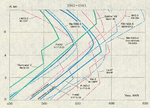FLYBOYJ
"THE GREAT GAZOO"
Great post guys - the comments about the P-40 "handing the Japanese their asses" is based on folklore and left over propaganda. No one can refute the success of the AVG, but remember, they were also shooting down bombers and I think many times many folks don't realize that when the AVG's "Kills" are mentioned, quickly it is assumed it's against fighters and for even the lesser informed, "Zeros."


